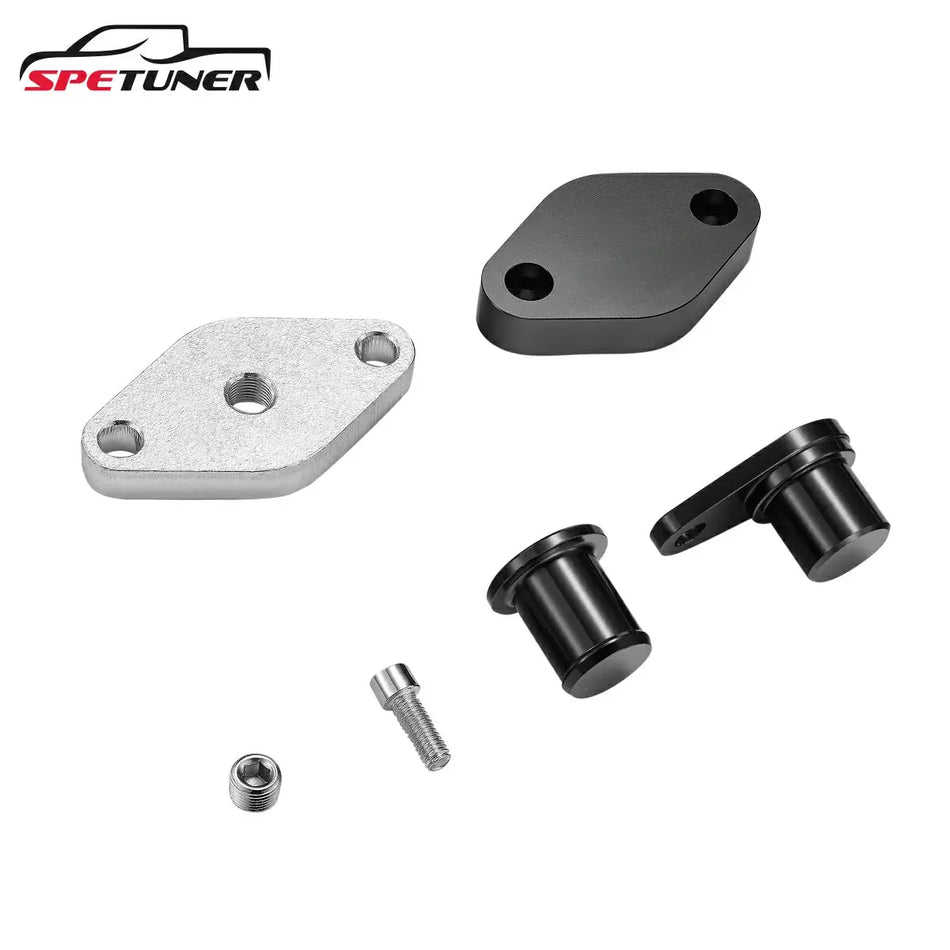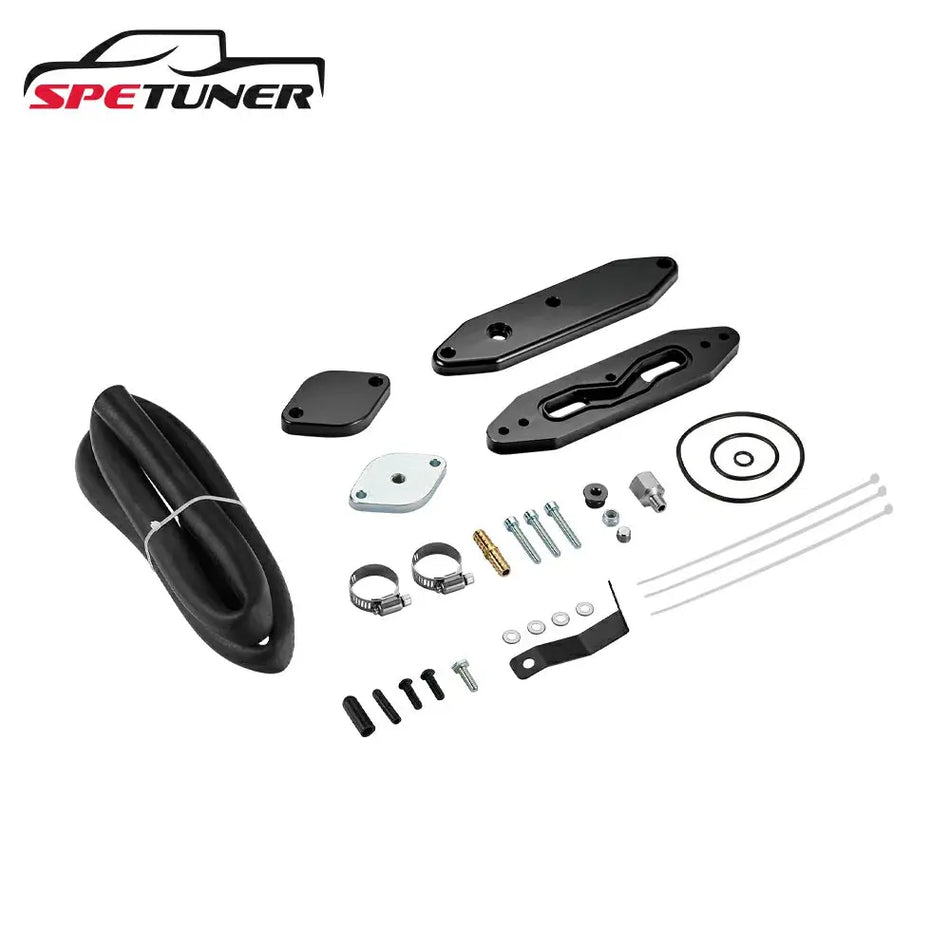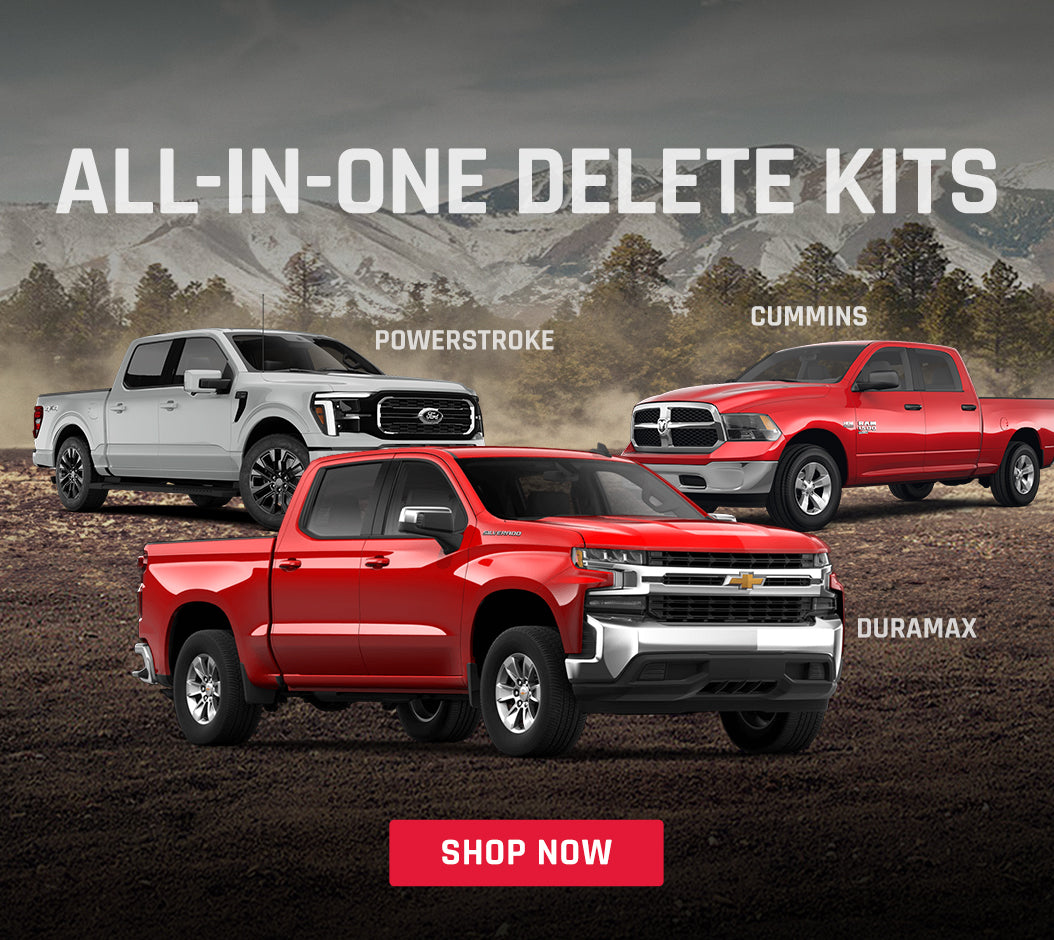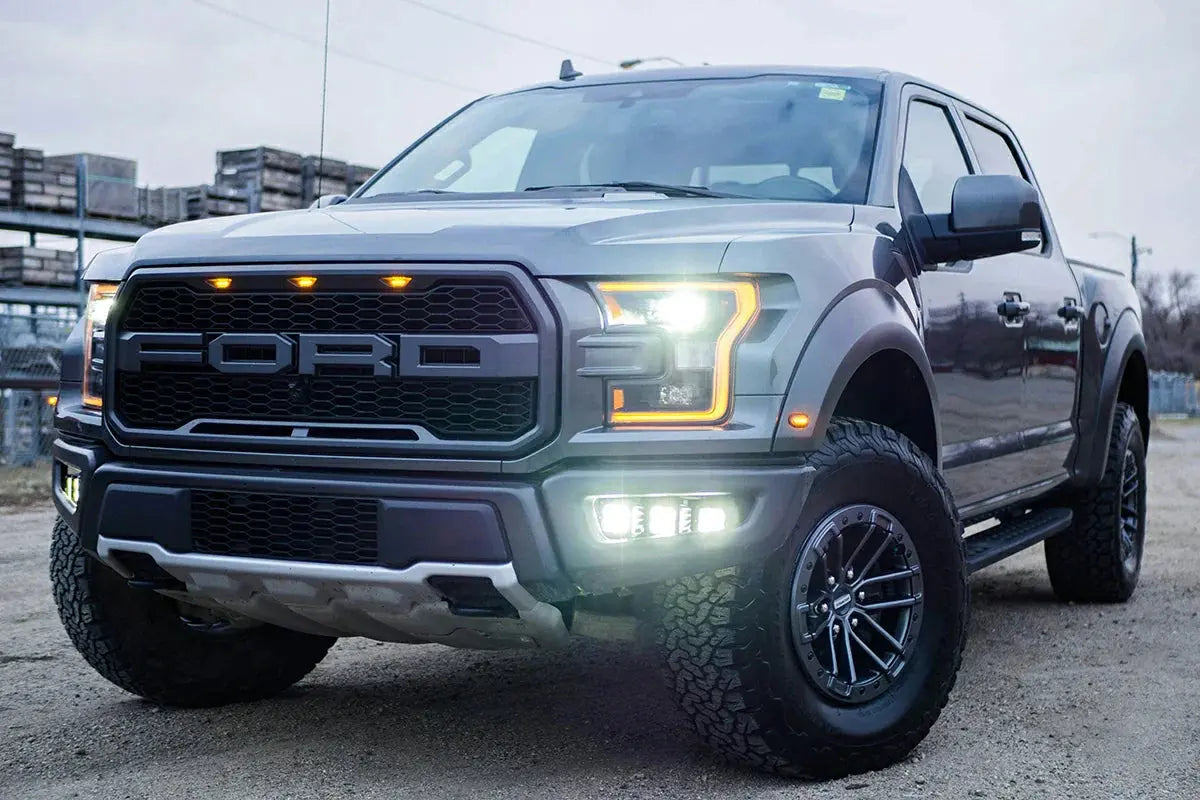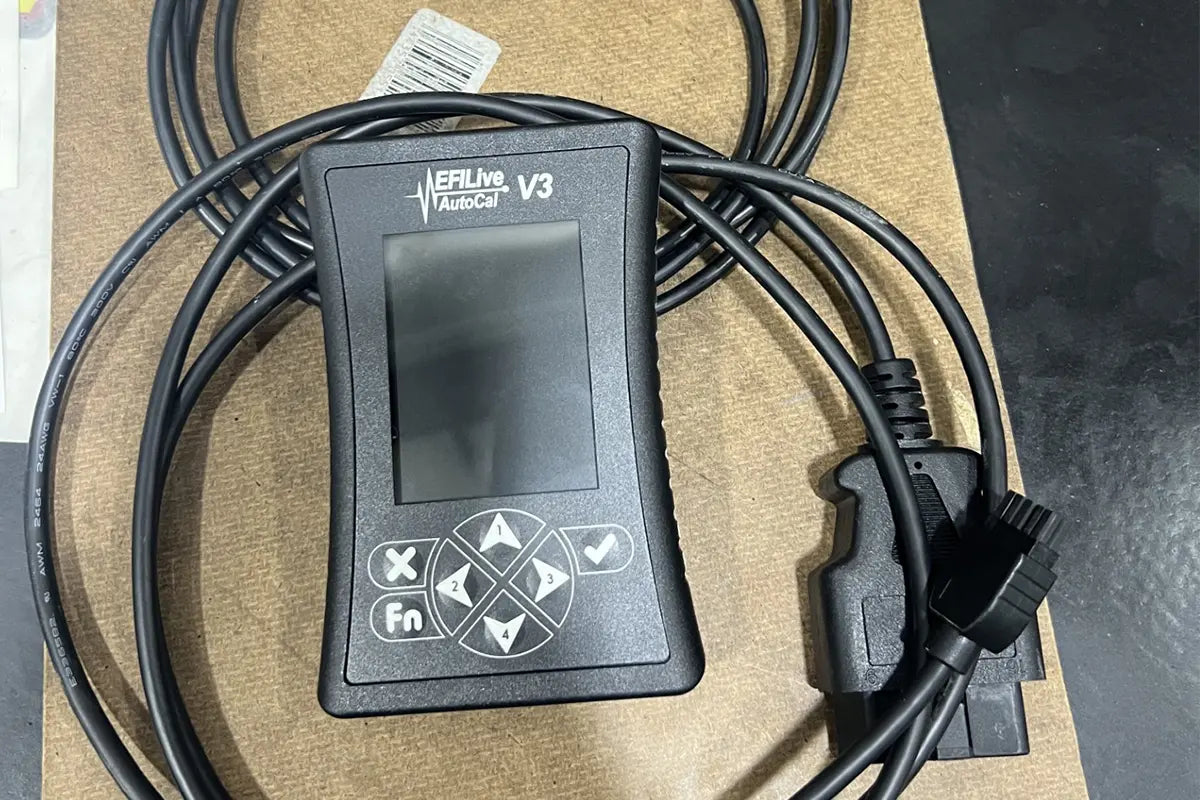Author: Lars, Diesel Truck Modification Enthusiast at SPETUNER
If your truck diesel has EGR problems, you have two main choices: install a blocker plate or do a full EGR delete. This guide explains both options in simple terms and helps you understand EGR Delete vs Blocker Plate. Which solution is better for your Duramax, 6.7 Powerstroke, or Chevy Silverado?
What is an EGR Blocker Plate?
An EGR blocker plate is a flat piece of metal that stops exhaust gases from flowing through your EGR system. You bolt it between the EGR cooler and the exhaust pipe. This keeps soot and dirt out of your engine while leaving all the EGR parts in place.
How Blocker Plates Work
A typical blocker plate setup includes:
- Metal blocker plate - Goes between the EGR cooler and exhaust pipe
- Gaskets - Makes an air-tight seal
- Bolts - Holds everything together
- Sensor port - Some plates have a spot for a temperature sensor
The plate blocks exhaust gases but keeps the EGR parts on your engine. You need to change your truck's computer tuning to avoid check engine lights.
Important note: Blocker plates are a temporary fix. They don't remove the parts that can fail later, and many truck owners eventually upgrade to a full delete anyway.
What is an EGR Delete?
A high-performance EGR delete kit means you take off all the EGR parts from your engine:
- EGR valve and motor
- EGR cooler
- All EGR pipes
- All sensors and brackets
You replace the removed parts with new pipes and plates. This makes your engine bay cleaner and lets air flow better. You also need to change your truck's computer to turn off EGR codes. This is a permanent solution that removes all failure points.
Read more: What is EGR Delete?
EGR Delete vs Blocker Plate: Direct Comparison
Here's how the two options compare:
| What Matters | EGR Blocker Plate | Full EGR Delete | Winner |
|---|---|---|---|
| Power Gains | Good improvement | Best improvement | EGR Delete |
| How Hard to Install | Easy (30-60 minutes) | Moderate (2-4 hours) | Blocker Plate |
| Parts Cost | $50-$150 | $400-$800 | Blocker Plate |
| Total Cost (with tuning) | $450-$750 | $800-$1,400 | Blocker Plate |
| Easy to Put Back | Very easy | Not reversible | Blocker Plate |
| How Engine Looks | Looks stock | Clean race look | EGR Delete |
| Better Airflow | Good | Best | EGR Delete |
| Pass Inspection | Easier (looks stock) | Nearly impossible | Blocker Plate |
| Long-term Reliability | EGR parts can still fail | No EGR parts to break | EGR Delete |
| Permanent Solution | No - temporary fix | Yes - complete removal | EGR Delete |
Why Blocker Plates Are Only a Temporary Fix
Blocker plates have several limitations:
- EGR valve motor can still fail (common at 100k+ miles)
- EGR cooler can crack and leak coolant (expensive repair)
- All EGR components still add weight to your engine
- Takes up valuable space in engine bay
- Many owners end up doing full delete later anyway
- On high-boost applications, valve can still open
The hidden cost: If you start with a blocker plate, then upgrade to full delete later, you pay for tuning twice and spend more money overall.
Why Full EGR Delete is the Better Long-Term Choice
EGR delete provides permanent benefits:
- Completely removes all failure points
- Maximum power and performance gains
- Best airflow and turbo response
- Cleaner engine bay for easier maintenance
- No risk of EGR components failing later
- Better solution for high-power builds
- One-time investment - do it right the first time
When Each Option Makes Sense
Consider a Blocker Plate Only If You
- Need to change back easily for emissions testing
- Plan to sell truck within 1-2 years
- Have very limited budget (under $200 for parts)
- Live in strict emissions testing state
- Want to test EGR elimination before committing
Reality check: Most people who choose blocker plates eventually wish they had done the full delete from the start.
Choose Full EGR Delete If You
- Want a permanent solution
- Run any power tune (even +50 HP)
- Keep trucks long-term (3+ years)
- Want maximum performance gains
- Prefer doing the job once and doing it right
- Don't need to pass emissions testing
- Want the cleanest possible engine bay
- Use truck for towing, racing, or heavy work
Understanding the Full Cost
When comparing costs, look at the total picture:
Blocker Plate Total Cost
| Item | Cost |
|---|---|
| Blocker plate | $50-$150 |
| Gaskets | $20-$40 |
| Computer tuning | $400-$600 |
| Total | $470-$790 |
| If EGR motor fails later: +$300-$500 repair OR upgrade to full delete | |
Full EGR Delete Total Cost
| Item | Cost |
|---|---|
| Complete EGR delete kit | $400-$600 |
| Delete pipes and hardware | $150-$300 |
| Computer tuning | $400-$600 |
| Total | $950-$1,500 |
| One-time cost - no future EGR repairs needed | |
Long-term value: While full delete costs more upfront, you avoid future EGR repairs that can cost $1,000-$2,000. Over 5 years of ownership, full delete is actually cheaper.
Read more:
How Much Does It Cost to Delete a Diesel Truck?
How Much Does It Cost to Delete L5P?
Unplugging EGR vs Delete vs Blocker Plate
Many truck owners wonder if simply unplugging the EGR valve works. Here's the truth:
Just Unplugging the EGR
What happens: You disconnect the wire to the EGR valve so it can't open.
Problems with this way:
- Check engine light comes on right away
- Truck might go into limp mode
- Exhaust gases can still flow if valve breaks
- Doesn't stop EGR cooler problems
- You need tuning anyway to clear codes
Our advice: Don't do this. If you're tuning anyway, invest in a proper solution.
Tuning Only (No Physical Changes)
What happens: Computer programming tells the EGR valve not to work.
Good things:
- No hands-on work needed
- Easy to change back
- No way to see it was changed
- No check engine lights
Bad things:
- EGR valve might still open under high boost
- Doesn't stop EGR cooler from breaking
- Some trucks make weird sounds at idle
- Exhaust gases can leak through broken valve
The Smart Choice: Full Delete with Tuning
Why this is best: Physical removal plus computer change gets rid of all EGR parts and things that can break. It's the only true permanent solution.
EGR Delete by Truck Model
6.7 Powerstroke (Ford F-250, F-350, F-450)
The 6.7 Powerstroke benefits greatly from full EGR deletion:
Why full delete is better for 6.7 Powerstroke:
- EGR cooler is known to fail (especially pre-2015 models)
- Removes heavy, bulky components from engine bay
- Significantly improves throttle response
- Better for towing and heavy loads
- Cleaner oil - EGR causes oil contamination
Installation notes:
- Takes 2-4 hours for experienced DIYers
- Exhaust manifold bolts can be tricky (soak with penetrating oil first)
- Later models (2015+) are easier to work on
- Quality delete kit makes huge difference in fitment
For detailed guidance, check our complete 6.7 Powerstroke EGR delete guide.
LBZ Duramax (2006-2007)
The LBZ is one of the most popular engines for EGR deletion:
Why LBZ loves full deletes:
- No DPF system to worry about
- Simple emissions system
- Great power response to deletion
- Strong aftermarket support
Performance gains with full delete:
- Power gains of 20-30 HP with delete + tuning
- Better throttle response
- Lower air temperature (50-100°F cooler)
- Cleaner engine oil
- No EGR valve failures
Why blocker plates are less ideal: While some LBZ owners run blocker plates, they still face potential EGR motor failures around 100k-150k miles. Full delete eliminates this risk completely.
LML Duramax (2011-2016)
The LML strongly benefits from full EGR deletion due to its high-pressure system:
LML-specific problems with blocker plates:
- High-pressure EGR - Uses more EGR flow than LBZ
- Boost interference - EGR valve can pop open above 20-22 PSI even when tuned
- Idle sounds - Can make weird noises at idle with just tuning
- Complex system - More parts that can fail
Why full delete is strongly recommended for LML:
- Prevents valve from opening under high boost
- Gets rid of idle noise completely
- Removes complex parts that break often
- Much better for power builds (400+ HP)
- Cleaner installation and better reliability
L5P Duramax (2017+)
The L5P has the most complex emissions system and benefits most from full deletion:
- Most restrictive EGR system of all Duramax engines
- Highest-pressure EGR operation
- Full delete gives the biggest performance gains
- Blocker plates don't work well due to high system pressure
6.7 Cummins (Dodge Ram)
Cummins engines respond very well to full EGR deletion:
Benefits for 6.7 Cummins:
- Big improvement in oil cleanliness
- Better turbo response and spool
- Removes common failure point (EGR cooler)
- Excellent for towing applications
- Cleaner intake system
6.0L Powerstroke (2003-2007)
The 6.0L Powerstroke has notorious EGR problems - full delete is almost mandatory:
Why 6.0L needs full delete:
- EGR cooler fails frequently (causes coolant leaks)
- EGR system contributes to oil cooler clogging
- Full delete prevents major engine damage
- One of the best reliability mods for 6.0L
Important: On 6.0L, the EGR system acts partly as a wastegate. For high-power tunes (275+ HP), consider adding an external wastegate to prevent head gasket damage.
Learn more in our 6.0L Powerstroke EGR delete guide: Pros and Cons.
6.4L Powerstroke (2008-2010)
Full delete is strongly recommended:
- EGR coolers fail very often on 6.4L
- EGR cooler replacement costs $2,000+
- Delete kit costs $500-800 (much cheaper than repairs)
- Major performance gains with deletion
Power Level Guide: What You Really Need
| Power Level | Recommended Solution | Why |
|---|---|---|
| Stock | Full EGR Delete preferred | Prevents future failures, improves reliability |
| +50 to +100 HP | Full EGR Delete recommended | Better airflow, no risk of valve opening |
| +100 to +200 HP | Full EGR Delete required | High boost can force valve open with blocker |
| +200 HP and above | Full EGR Delete mandatory | Blocker plates will not work reliably |
Bottom line: Even at stock power levels, full delete is the smarter long-term choice.
Are EGR Deletes Legal?
This is an important question for any diesel owner.
Federal Law
Clean Air Act Section 203: It's against the law to remove, turn off, or mess with emissions parts on vehicles used on public roads.
This means:
- Both EGR blocker plates and full deletes are illegal for street use
- Tuning to turn off EGR is also illegal
- Any change that affects emissions is illegal
Penalties:
- Truck owners: Up to $5,000 fine each time
- Shops that install: Up to $50,000+ per truck
- Companies that make/sell: Millions in fines
Legal Uses
EGR deletes are legal ONLY for:
- Off-road use only - Racing, competition vehicles
- Farm equipment - Agricultural vehicles not used on public roads
- Show vehicles - Display-only trucks never driven
- Export vehicles - Trucks being sent to other countries
State Rules
| State Type | Testing | Risk Level |
|---|---|---|
| California, Colorado, Connecticut | Strict emissions testing with visual check | Very High |
| New York, New Jersey, Massachusetts | Computer scan and visual checks | High |
| Texas, Florida, Most of Midwest | Safety check only (no emissions for diesels) | Low |
| Montana, South Dakota, Mississippi | No checks needed | Very Low |
Warranty Impact
Both blocker plates and full deletes void warranty:
- Whole engine warranty cancelled
- Emissions warranty gone
- Dealers can say no to all service
- Must go back to stock before warranty claims
Important note: Since both options void warranty anyway, this is not a reason to choose blocker plate over full delete.
Why SPETUNER EGR Delete Kits Are the Smart Choice
If you've decided that full EGR deletion is right for your truck, choosing quality components matters:
What Makes SPETUNER Different
- Perfect fit - Engineered specifically for each truck model
- Complete kits - Everything you need in one box
- Quality materials - Stainless steel and high-grade aluminum
- Proven reliability - Thousands of successful installations
- Better value - Quality components at fair prices
SPETUNER Kits Include
- All delete pipes and plates
- High-temperature gaskets
- Stainless steel hardware
- Detailed installation instructions
- Customer support
Available for All Major Diesel Engines
- 6.7 Powerstroke (2011-2019)
- 6.0 Powerstroke (2003-2007)
- 6.4 Powerstroke (2008-2010)
- 6.7 Cummins (2007-2020)
- Duramax LBZ, LMM, LML, L5P
Real User Experiences
Here's what diesel truck owners say about their choices:
Blocker Plate Users Who Wish They'd Done Full Delete
- "My EGR motor died at 120k miles. Wish I had just done the full delete from the start."
- "Spent $500 on blocker plate and tuning. Two years later spent $1,200 on full delete. Should've done it right the first time."
- "Blocker plate worked fine until I went big turbo. Had to upgrade to full delete anyway."
Full Delete Users Who Are Happy They Did It
- "200k miles on my deleted LBZ. Zero EGR problems. Best $1,000 I ever spent."
- "Full delete made my 6.7 Powerstroke feel like a different truck. So much more power."
- "Engine bay is so much cleaner. Makes all other maintenance easier."
- "Five years and 150k miles later, still no regrets about full delete."
The Bottom Line: Which Should You Choose?
After looking at thousands of real-world cases, here's our honest recommendation:
Choose Full EGR Delete If
- You plan to keep your truck for 3+ years
- You want a permanent solution
- You run any level of performance tuning
- You want maximum reliability
- You prefer doing the job once and doing it right
- You don't need to pass emissions testing
- You want the best performance gains
- You use your truck for towing or work
Consider Blocker Plate Only If
- You need easy reversibility for emissions testing
- You plan to sell truck within 1-2 years
- You have extremely limited budget
- You want to test the concept before committing
Our Professional Recommendation
For 90% of diesel truck owners, full EGR delete is the better choice. Here's why:
- Better long-term value - Avoid future EGR repairs
- Maximum performance - Get all the benefits, not just some
- Permanent solution - Do it once and be done
- No regrets - Almost no one regrets doing full delete
- Easier maintenance - Cleaner engine bay for life
The staged approach myth: Many people think they'll "start with blocker plate, upgrade later if needed." In reality, 70% of people who do this end up doing the full delete within 2 years anyway - spending more money overall.
Conclusion
The choice between EGR delete and blocker plate comes down to your specific needs, budget, and goals.
Daily use, low budget, need to switch back: a blocker plate is the simple path.
High power, long-term build, not going back: a full removal makes more sense.
SPETUNER offers quality EGR delete kits for Duramax, Powerstroke, and Cummins diesel engines. Whether you pick a blocker plate or a full delete, using quality parts makes sure it works well and stops the problems that made you want to change it in the first place.
Make the smart choice once - invest in a quality full EGR delete kit and enjoy permanent benefits without future headaches.
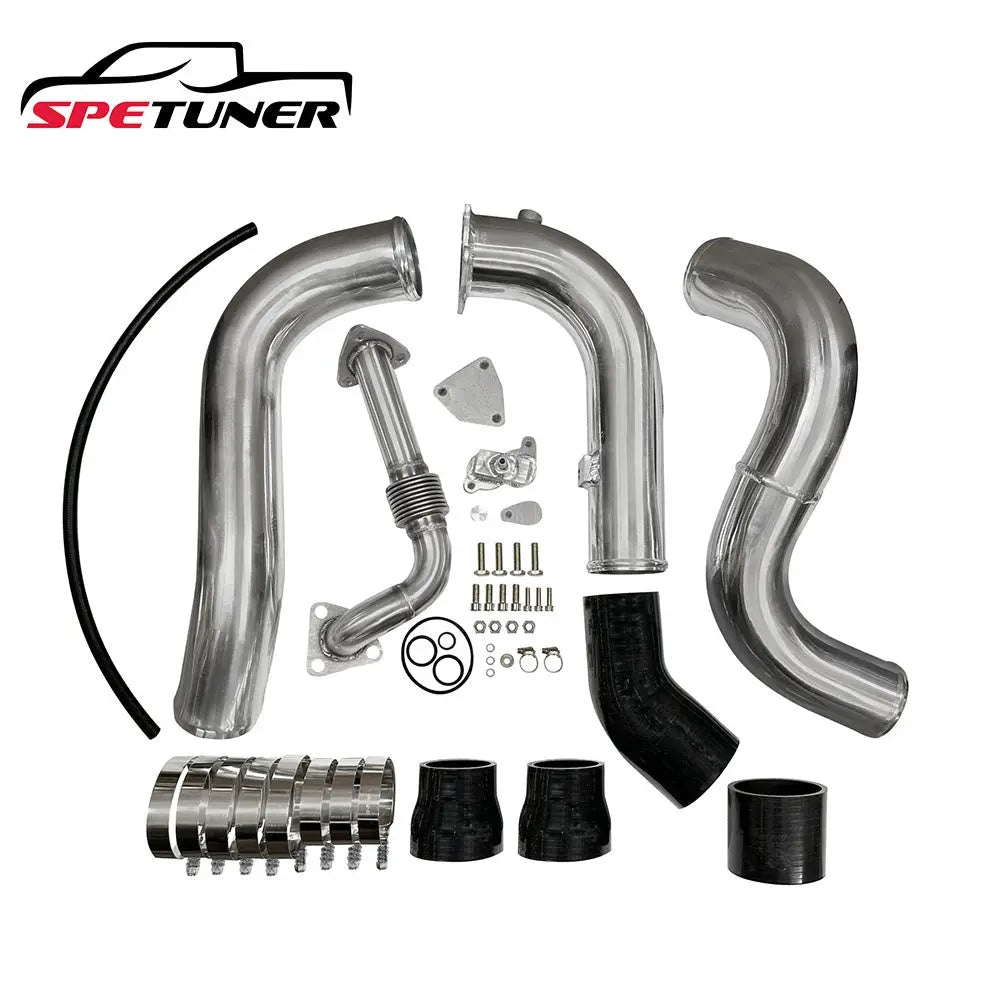
EGR Delete Kits — Shop by Engine (Powerstroke / Cummins / Duramax)
EGR delete kit
$398.00 USD
Buy NowFrequently Asked Questions about EGR Block-Off Plates vs. EGR Delete
Is an EGR delete better than a blocker plate?
An EGR delete removes the EGR hardware and can deliver the largest performance gains for high-power builds. Blocker plates are typically better for budget-conscious daily drivers who want simpler reversibility. For largely stock trucks, blocker plates can deliver much of the perceived benefit at a fraction of the cost.
What are the benefits of an EGR block-off plate?
Blocker plates reduce intake carbon buildup and oil contamination, may lower charge air temps (often cited at ~50–100 °F in some setups), help prevent EGR-cooler failures, are inexpensive ($50–$150 for parts), quick to install (often under an hour by an experienced technician), and are easier to remove for resale or inspection.
Are EGR block-off plates legal?
No. For vehicles operated on public roads, removing or disabling emissions equipment violates U.S. federal law (Clean Air Act). Such parts are generally limited to off-road/competition use, non-highway agricultural applications, or export vehicles. Penalties for on-road use can include fines (truck owners may face fines up to $5,000).
Do EGR blanking plates work?
They can be effective when paired with appropriate engine management (tuning) to prevent diagnostic trouble codes. Owners commonly report reduced soot buildup and improved drivability. However, high-boost applications (e.g., sustained >25 PSI) may exceed what a simple block-off can manage; suitability depends on the platform and goals.
Can I just unplug my EGR instead of blocking it?
No. Unplugging the EGR valve will typically trigger check-engine lights and can cause limp mode. Without mechanical blocking, the valve can still leak or open, allowing exhaust gas flow. If engine codes are disabled via tuning, at minimum a physical block-off is recommended for protection in off-road/competition contexts.
Will a blocker plate work on a 6.7 Powerstroke?
Blocker plates are commonly used on 6.7 Powerstroke engines (2011–2019) in daily-drive, mild-use scenarios. Installation involves EGR-related connections and fasteners that are prone to seizing; professional tools and care are required to avoid breakage. Always verify fitment by model year and follow detailed instructions from the manufacturer.
What’s the difference between LBZ and LML EGR systems?
LBZ (2006–2007): lower-pressure EGR and no factory DPF; blocker plates are often sufficient on near-stock trucks.
LML (2011–2016): high-pressure EGR with DPF; at higher boost/load, some systems may still drive EGR flow even when tuned off. Full removal (off-road/competition only) is more common on heavily modified builds.
How much does EGR delete vs. blocker plate cost?
Blocker plate route: parts $50–$150 + tuning $400–$600 = roughly $450–$750 total.
Full EGR delete: parts $400–$800 + tuning $400–$600 = roughly $800–$1,400 total.
Add $400–$800 for professional installation if not DIY.
Compliance notice: Modifying, removing, or disabling emissions equipment is illegal for on-road use in the United States and many other jurisdictions. Information is provided for off-road/competition contexts and general awareness only. Always follow local laws and regulations.

